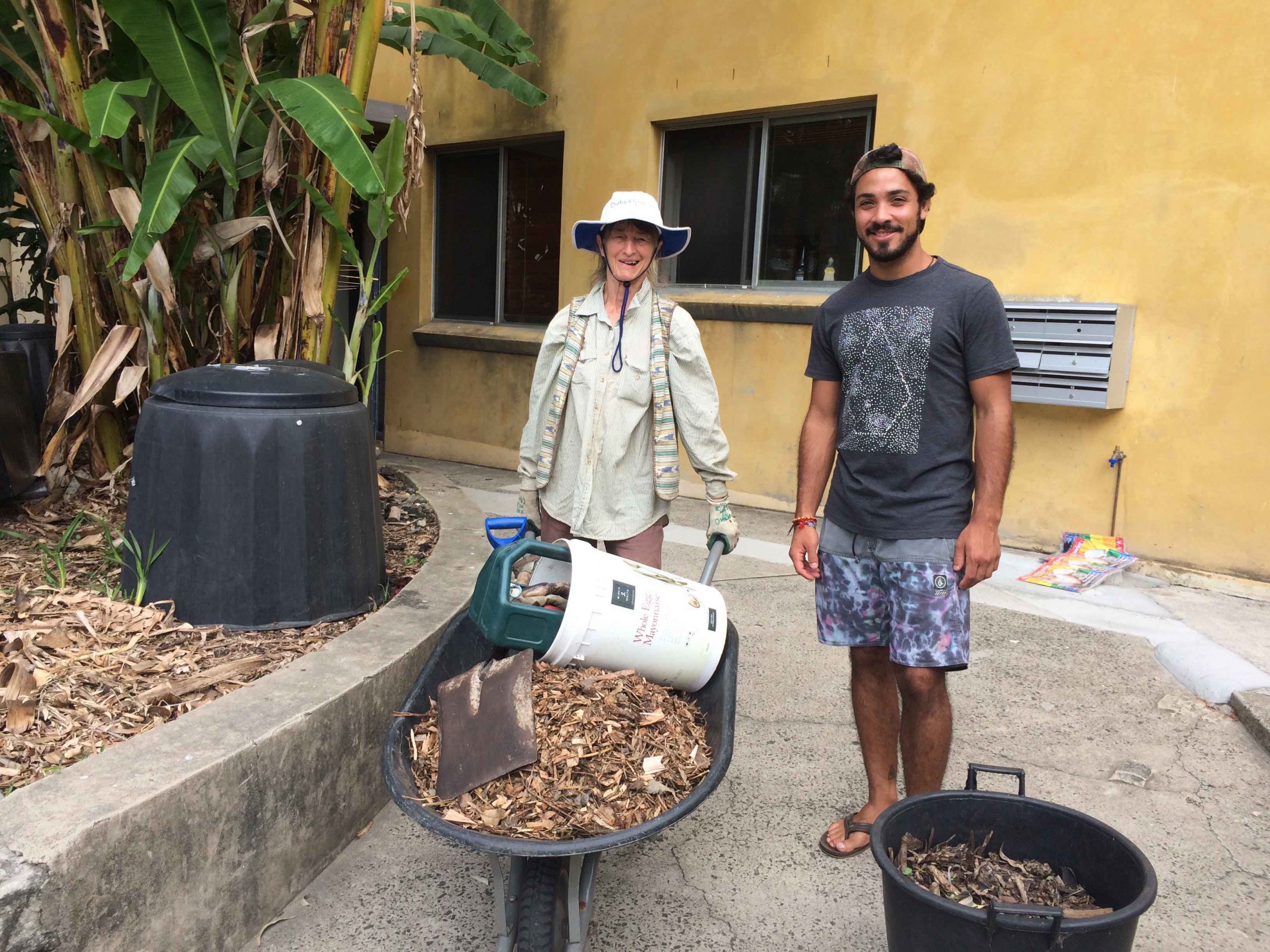Tragedy of the commons is not inevitable
Words by Kit, and pictured above are Kit and Gonzalo.
When walking (my main form of transport) around Bondi there are many small areas to be seen – at the edges of lanes or on verges – with a look of neglect, or abandonment from earlier efforts to grow something.
The term tragedy of the commons comes to mind here. Also referred to as the open-access problem, it is when individuals acting according to their own self-interest deplete or spoil a shared resource.
Historically, ‘the commons’ was a shared grazing area for livestock. Nowadays it could mean any shared and unregulated resource such as atmosphere, oceans, rivers, fish stocks, or even an office refrigerator.
We would all recognize aspects of city life that suffer: the state of garbage bins in apartment blocks, beaches and parks strewn with litter, pollution in the ocean and the above-mentioned disheveled verge gardens and laneway edges.
Common space is undervalued, and individual engagement is lacking, perhaps due to both the sense that someone else will be responsible for it or that ‘privacy’ forbids us to get involved in aspects of common space.
However, people are not intrinsically selfish – if alone in an emergency, people are 10 times more likely to offer assistance than if in a group – but we are constrained by social pressures to not act. (Source: New Internationalist #289 HOW ARE WE TO LIVE “Born To Be Good?” By Delia Kitzinger)
Why do we think something, but fail to act?
It is a psychological reality that people may think something, but fail to take action because of social norms and the perceived risk of embarrassment by going against the flow. We wait to see how others react, and can be lulled into thinking there is no need when others don’t. What looks like callous indifference is actually fear of what other people will think if we make an inappropriate response in any ambiguous situation.
How do we break away from that oppressive fear of embarrassment and move toward the freedom of alignment with our values, into integrity? The heart is shy, but the mind can choose.
The value of the outsider, and the first follower
This points toward the value of the brave person who is not inhibited by fear of others’ assessment of them. Or as mentioned in an earlier blog article, the first follower is the real leader:
There is no movement without the first follower. We’re told we all need to be leaders, but that would be really ineffective.
The best way to make a movement, if you really care, is to courageously follow and show others how to follow. When you find a lone nut doing something great, have the guts to be the first person to stand up and join in.
(from “First Follower:” leadership lessons from a dancing guy, by Derek Sivers)
The power of one tiny spot of beauty
Laneways and verge gardens are a focus of my environmental activity at present. It gives me pleasure to imagine bringing these small, abject pieces of the Earth’s surface, back into the realm of consideration and care.
Imagine if one tiny spot of beauty caught people’s eye, so that they began to look for more, and then soon they wanted to create that same beauty close to their front door! Enough of this would surely be the beginning of a culture change around urban attitudes to common land.
When did you recently say ‘yes’ to your better judgement, overcoming inertia or peer pressure? We would love to hear your experience.
If you’d like to get involved in community restoration, why not join us every second Sunday of the month at the 241 Bondi Road Community Garden from 10am – 12 noon.


Please come and visit our community garden in Langlee Lane, off Dickson Street Bronte… its beautiful and has created community!
Loved the video so much – so clever, it says so much with so few words in such a short time. It has inspired me!
in solidarity
Chris Mason
Sounds like a wonderful spot Chris. I agree, that video never gets old 🙂
Thanks for presenting this article. I would like to point attention to the biggest common in Sydney. Over the last century or more it provides a stunning example of the erosion of the commons. Yes the original name for what is left Centennial and Moore Park was once known as the Sydney Commons. It encompassed, the parkland, the fox studio site, the cricket ground, the Alliance Statium, Robertson Road housing estate, Moore Park deep into Kensington, the racecourse, housing in Paddington beyond Oxford st. A true common for the early sydney siders to graze their animals. A common that is protected by laws around the commons land. The current footprint of the commons the Centennial Parklands. The only area open to all in the spirit of the commons. The eroded commons, striped by state governments through shonky piesces of legislation and board appointment made on loyalty to governments not the commons. Not what belongs to the people. Lets look at the last lost of the commons. Two in particular, the government’s pressure for the parkland to hire the place for corporate events, while withdrawing funding of the park. This is shameful, but not as shameful as the compulsory purchase of a sliver of land along the periment for a few million dollars and not the billion dollar value the land might have, in the free market, The eeosion of the commons bequeathed at federation to the people of NSW as open space as a grand vision of parklands. Supposedly never to be touched again. The commons and again they are under attack ffrom a government who thinks to continue the corpritisation of the commons , to have yet another hack. The rebuilding of Alliance Statium, what will it cost the current footprint of the parklands. W. What can we do. Support the campaign to resist the rebuild of the Alliance Statium. But more importantly we need to bring contol of all land and property built on the common into contol of one body directly elected by the people. The erosion of the Sydney Commons must end, proect the open space we have left.
Thank you for sharing Kathlene.